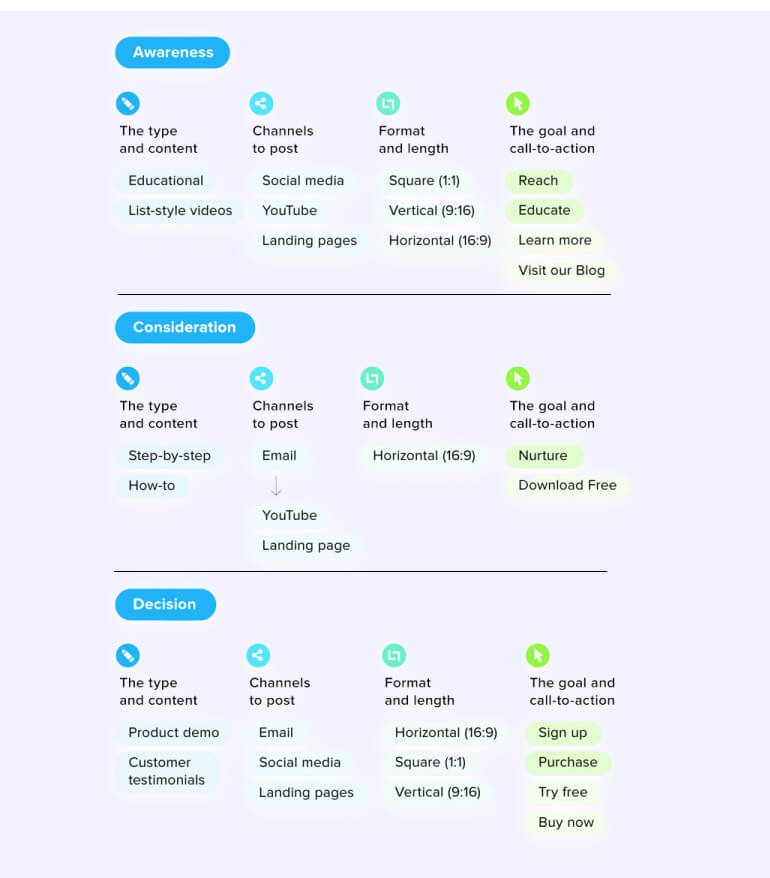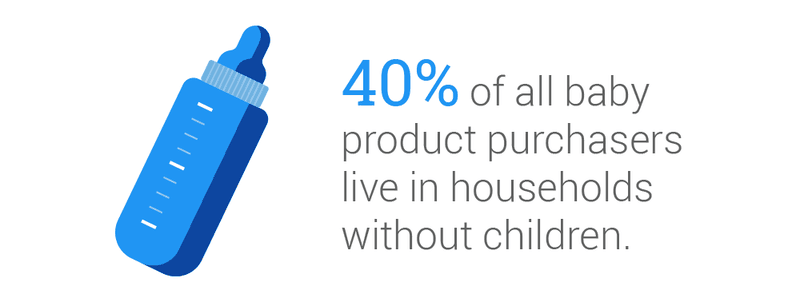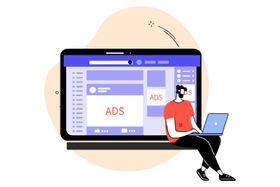Video Advertising: 5 Secrets to Making Killer Videos
The comprehensive guide on video advertising - learn the top secrets about targeting your users with video, types of video, and how to tell your story.
Updated November 6, 2024

Remember those times when selling online was easy? You only had to have access to a product, snap a picture, upload it to Facebook Ads, and a few minutes later, the sales started coming.
Today, that’s not the case.
And sometimes the frustration makes us want to slam our laptops and cry. Competition has increased, ad costs are skyrocketing and the average customer's attention span has shrunk to smaller than a pea.
The good news is, there is still a way to be better than our competitors and have better ad costs. And that's with videos!
In this post, we take a deep dive into video ads, strategies for how to optimize them, and video tactics to get you the ROI you've always wanted.
Let's dive in.
What is video advertising?
Video advertising traditionally refers to promotional content that plays before, during, and after streaming video content. But it also refers to video ads that are shown on various social platforms like Facebook, Instagram, Tik Tok, search engines, and native video ads promoted on digital ad networks. They could also be seen in mobile games and virtual reality (VR) applications.
This form of online video content has different objectives depending on the platform they are placed. They could be - brand awareness, storytelling content, and conversion (which has a strong CTA).
Video advertising trends
Video ad campaigns have been around for a very long time. That being said, there are several new advertising trends in digital video to use on every platform. They could vary depending on your audience or product.
Here are some of the best ones that video ads experts are using today to get impressions and engagement.
Vertical content
One of the biggest trends is to create short video clips for TikTok and Instagram Reels. The specs for these videos are usually 9:16.
They should not be longer than 90 seconds for Instagram and 10 minutes for TikTok. The best performing ads are short-form or 10-30 seconds.
The best strategy for these online video campaigns is to create UGC (user-generated content) videos. A regular Jane or Joe showing and praising your product has a higher impact than a model posing with it.
Psst: not seeing the ROI you want to see from video ads? Jump on a call with one of our top advertising consultants.
Personalized video ads
Personalized video advertisements are when the advertiser adds info collected in previous interactions across the marketing funnel.
Facebook started doing this several years ago with its video ads.
Nike does the same thing. Here's a video from 2015 where they display some of the user fitness achievements of the year.
These brands use video ad templates and insert data that users have shared with them on channels like Google Ads, Facebook, and other social media platforms. It creates a more personalized video experience for the user, improves viewer engagement, and increases conversions.
360 video ads
This is the closes video ad content to a real experience. This type of video ad is useful for Amazon listings because it shows the viewer more details than a simple image. Amazon viewers and buyers love 360 ads.
Imagine searching for sneakers at a physical store. You usually grab them and look at them from different angles to imagine how they will look on you. That's the purpose of these video advertising campaigns. They are perfect for companies that want to improve their online commerce revenue.
360 videos also work for non-retail industries such as real estate or hospitality. They can show the viewer how an apartment or hotel looks. This strategy can significantly increase completion rates (when a consumer watches the entire video) if used properly.
User-generated content
Every video advertisement campaign should have UGC. We use UGC to connect the audience with real-life people who already used and loved our products.
The best part is - you don't need a complete production team to create your video ads.
Just ask your customers to send a video review as Amazon does.
You could offer them an incentive like a discount or a gift with their next purchase. You can use Instagram or Tik Tok to edit your videos and add images/music to give them an extra engagement boost.
These have one of the best CPMs of any video advertising strategy.
Types of video advertising
Online video ads are everywhere: on social media, mobile apps, and website banners. But not all videos are the same. Here are some of the different types of videos and a quick explanation of how companies use them.
Display ads
Display ads are like the online version of a billboard. These are the ones you could see on websites as banners with product information. These display video ads are great for brand awareness campaigns and for increasing conversion rates.
Native video
A native ad is non-disruptive content attached to an article or website. They are similar to display ads, but what's different is their formats and placement. Research from eMarketer shows that native video ad spending has grown from $7.66 billion to $16.46 billion in just 3 years (2017-2020).
Disruptive video ads
The most popular one. These are the video ads we find on TikTok, Facebook, Instagram, and Youtube. It's disruptive because it interrupts the user's activity to show the ad. Typically, they are charged by impressions or video views, and not by clicks. The best strategy is to show a strong hook before the first 3 seconds. That's the only way the viewers will watch the entire video.
How much should you invest in video advertising production?
This is one of the hardest questions to answer. It depends on a lot of factors - the price of your product, the size of your company, product features, etc.
If you're dropshipping or selling cheap products, we suggest using video templates. This will solve most of your problems creating your content.
Prices for these templates or software are around $80 to $100 monthly. But, if you are serious about your brand and want to make six or seven figures then the best option is to hire a video production agency like Social Kick.
We have video ad packages for small and medium companies. You'll get the creativity and quality of a big production agency to be able to stand out from your competition.
How do video ads fit in the marketing mix?
Video ads fit all marketing objectives, no matter what phase your company is in - whether you are proving a concept or in a growing phase.
One of the benefits of video ads is that they help you share your brand story with your target audience in an engaging way. A simple animated graphic or text misses the human side of things.
Also, videos could be adapted to show your products across the customer journey.
For example -
- Google video ads (the awareness stage)
- Amazon (the consideration phase)
- Social media videos and feed video ads (purchase decision / retargeting)
Now that you know how a good idea of the type of video ads there are and where to fit them into your marketing funnel, let's talk about high-level strategy.
5 secrets to a killer video advertising strategy
Here at Social Kick, we created this list with 4 secrets to making video ads that sell.
We have been running videos ever since your grandma started watching infomercials. (We even aired infomercials in some countries for the very first time). And 25 years of selling millions of products worldwide have taught us one thing or two.
1. Solve a problem for the viewer
When you're creating online sales videos it's normal to start with an offer but there’s something that the infomercial industry taught us. We have to create a story.
Show the problem, make people feel the pain, and dig into it as much as possible, so that you can then present them with a solution.
Think about it.
The infomercial products you remember, are those that created a brand that solved a common problem.
Got acne? Proactiv.
Got a stain on your clothes? Oxiclean.
Got to schedule a video call? Zoom.
These guys sold us on the fact that if anyone could solve that problem, it was them.
Other brands did not do this, and they’re the ones you see on sale at the nearest CVS.
So, how can we create that brand recognition first?
We need to create different types of video ad content for every stage of the customer journey.
2. Create content for the entire customer journey
Start with discovery videos. Teach your customers how to solve their problems for FREE.
For example, if you are selling skin care, create videos that teach your audience how to make home face masks or the best habits to have radiant skin.
Later, create some rapport videos. Create videos where you can answer the FAQs people have about the problem you solve.
Here’s a great video ad from Apple that brilliantly addresses a common issue that customers were facing.
Finally, create the sales video. Now they know that you are an authority on the topic and that you could have the solution they are looking for.
Look at your marketing goals to determine how much video content you should create for each stage of the customer journey. And you may use one channel for more than one purpose. For example, you could run YouTube Pre-Roll Ads or YouTube TV ads for the discovery stage as well as for later stages of the customer journey.
How do you determine the best placement for your ad? By using your audience data.
3. Use your audience data
One of the biggest mistakes we made when we transitioned from TV to digital sales was creating ads that "we thought” could work. We spent a lot of money on production and the result was that nobody liked, clicked, or even watched our content.
Why?
When people sit in front of a TV, they know they’re going to see ads and they've accepted that. It's part of the experience (at least if you don't have TiVo).
Social media is not the same. People go online to check on their friends, find exact products, or see video clips of cats. Users skip video ads that aren’t targeted enough and that’s partially why brands like Geico made ads like these:
So, the best way to create a video that engages with your customer is by using tools that tell you what they´re looking for. Use SEO tools like Keywords Everywhere, Answer The Public, or TubeBuddy to find the exact keywords your target audience is using to find information about similar products. Then, use that data to create better, more relevant videos.
4. Use consumer intent
Don’t have enough data on your customers? Not a problem.
A study by Google shows that consumer intent has a greater impact and drives more conversions than targeting users through demographic data. YouTube ads served in alignment with intent (rather than demographic data) saw a 32% uplift in ad recall and a 100% higher lift in purchase intent.
Not convinced? Here’s a fun fact.
Almost half of all baby product purchasers live in households without children.
That means, that if you’re selling baby bottles and are only targeting users that have children in their households, you’re missing out on 40% of your sales. That’s why it’s important to also target users by intent, and not just rely on the data.
5. Tell your story
Nobody scrolls on social networks looking for products. They are on social media because they are bored and need something interesting to watch. That said, the only way people will get interested in your video is by using 2 strategies - telling a story and eliciting emotion.
To get started, make a list of all the features your product has and try to tell a story around it. Focus on the problem your product solves by asking yourself the following questions:
- How do you feel when you have that problem?
- What are all the less favorable solutions?
- How is your product better than those?
- How is your life better because of this product?
Here's an example.
Let’s say I’m selling a man’s shaver. I would start the story by sharing the time I cut my face while shaving.
I will show in the video how it made me bleed and how I had to show up to a special date with tape in the middle of my face. You would feel the pain and shame I went through right?
Then I would show how I solved this problem with an electric shaver that's safer to use. And how it got me the most beautiful girl in the room.
I'll get even more conversions if I will share some images/videos from happy customers and an irresistible offer.
Remember: People buy stories and emotions, not products. Here’s a great example of an actual ad from Native.
Takeaways
Your story is equally important as the product you're selling. When you're making video ads don't try to push your product too much.
People want to see the human behind the product. They need to feel that you understand their problems.
Also, take in mind that shooting a product requires preparation. So before you whip your camera out, prepare everything on paper so that you can save time and money.
Want to make videos an integral part of your marketing strategy? Talk to one of our expert YouTube channel managers today!






